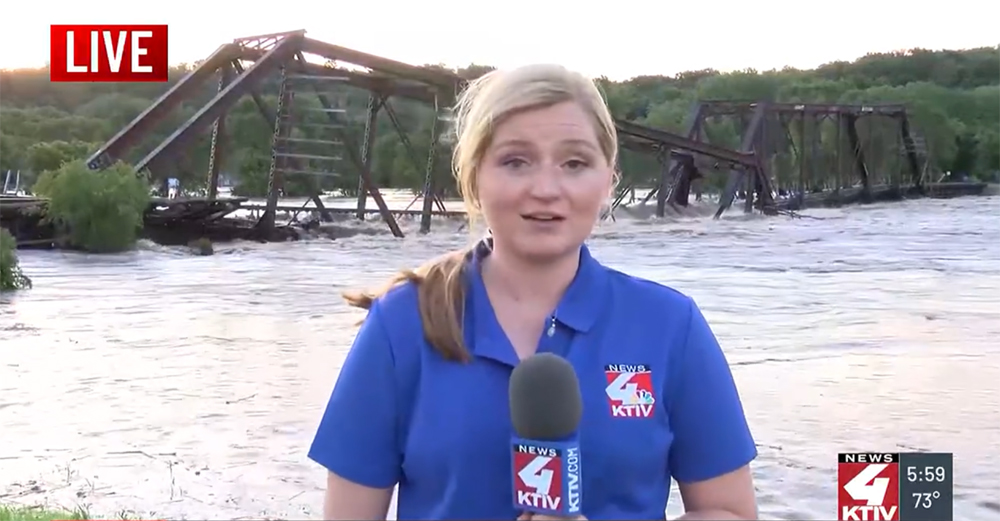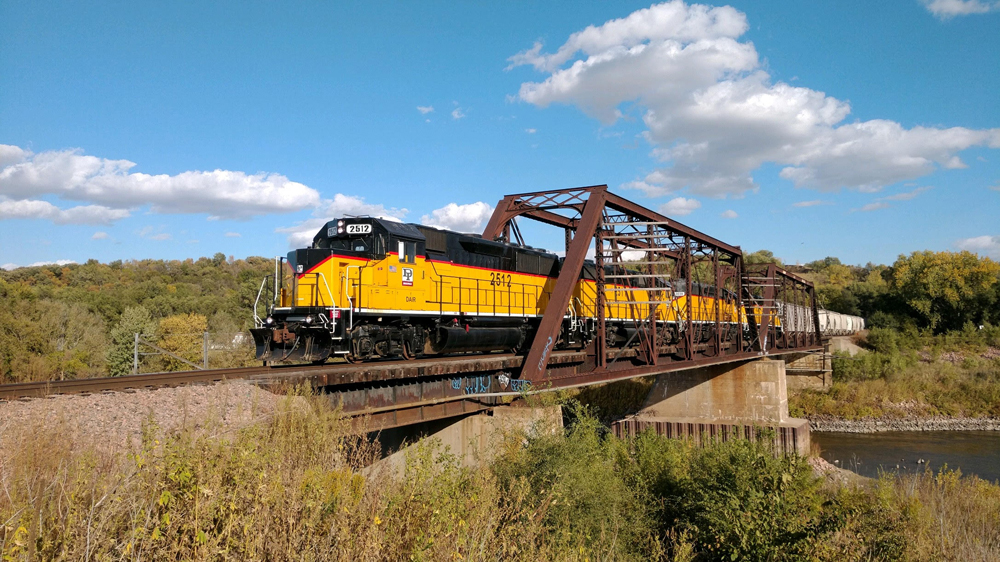
NORTH SIOUX CITY, S.D. — A portion of a BNSF Railway bridge connecting North Sioux City, S.D., and Sioux City, Iowa, collapsed Sunday night, as heavy rains and flooding continue to take a toll on the area.
“We have been monitoring the region through our increased track inspections and had not been operating over the bridge at North Sioux City as a precaution, given conditions,” BNSF spokeswoman Kendall Sloan said in an email to Trains News Wire. “At approximately 11 p.m. Sunday, the middle span of the bridge collapsed over the Big Sioux River. All trains are being rerouted via Creston, Iowa. We will continue to monitor and inspect conditions in the area and execute recovery operations as needed.”
KTIV-TV reports that the level of the Big Sioux River was at 44.25 feet as of 7:30 p.m. Sunday, surpassing its record of 37.7, but is believed to have crested.
The bridge, on a former Milwaukee Road line that is part of BNSF’s Aberdeen Subdivision, is also used by the D&I Railroad through trackage rights on BNSF between Elk Point, S.D., and Sioux City.















Once the water recedes, I give them 21 to 30 days, and it will be repaired.
It is important to not just raise bridge above any flood level. As well, additional heigh of a truss bridge in particular must be added to keep debris from pushing against bridge to cause it to be pushed off its bents such as happened here. The amount of potential debris may be some height at least what 5 feet above the flood waters itself??
Look what happened at the dam collapse. Debris slowed the ability for spillways to get rid of high water. Maybe some dams need to have openings below high water elevations to allow non contaminated water to exit dams??
The restoration of the bridge is maybe one location that 2 old standard RR cranes one on each end might have enough lift capacity to put the bridge back on its bents?? Are there any commercial cranes that might fit on the standing truss to provide room for a lift??
Look at the level of the water in the 2020 photo vs. the news photo. Dramatic.
wonder if span will be reuseable? Probably not! will BNSF raise the bridge during repairs?
The possibility of more flooding incidents may require RRs to evaluate all their bridges to see if any need raising.
They do NOT need to raise bridges to accomodate potential flooding, all they need is for them to be able withstand 1000 year floods. You design something withstand those kinds of events than normal events will have no affect on them whatsoever.
In this case it only took a 100 year old flood to topple this bridge as it is only 110 years old.